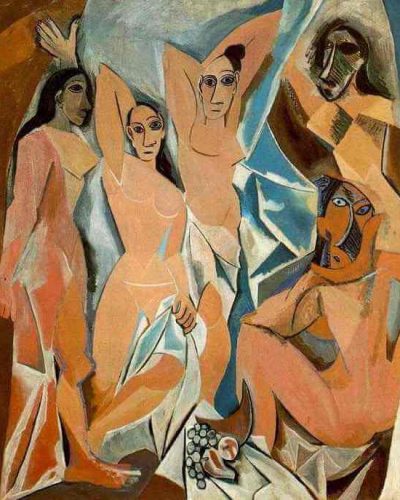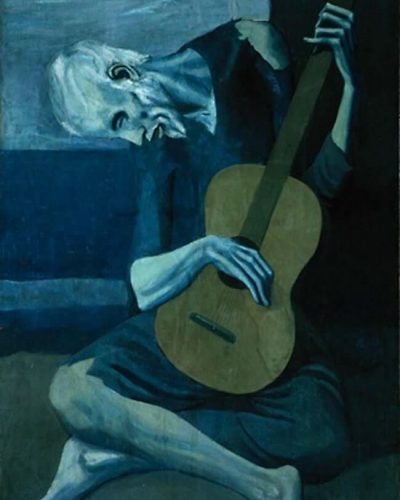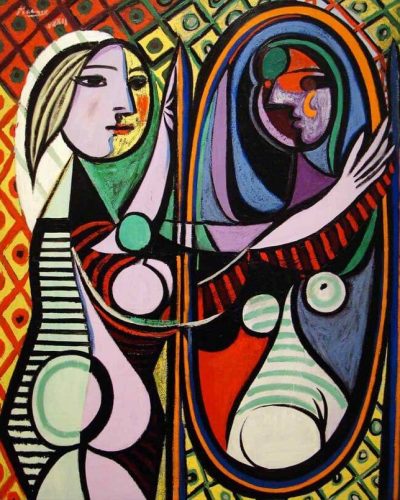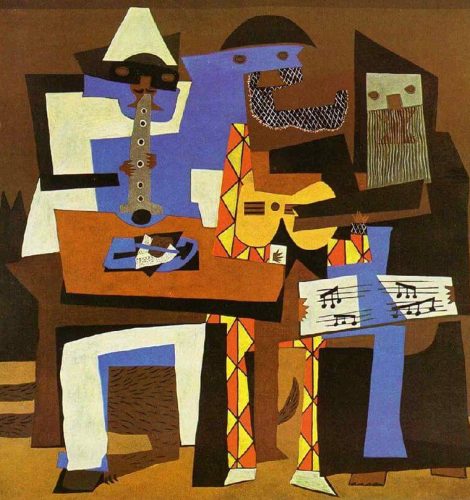Our two-bedroom apartments are designed to suit the needs of travellers with a family. Enjoy more spacious living, dining and study areas, as well as two bathrooms.
These suites are named after famous paintings of Pablo Picasso
Unit 1 – Les Demoiselles d’Avignon

This painting, Les Demoiselles d’Avignon, was painted in 1907 and is the most famous example of cubism painting. In this painting, Picasso abandoned all known form and representation of traditional art. He used distortion of female’s body and geometric forms in an innovative way, which challenge the expectation that paintings will offer idealized representations of female beauty. It also shows the influence of African art on Picasso.
This painting is a large work and took nine months to complete. It demonstrates the true genius and novelty of Picasso’s passion. He created hundreds of sketches and studies to prepare for the final work.
After nine years of the painting being created, Picasso had always referred to it as Le Bordel d’Avignon, but art critic Andre Salmon, who managed its first exhibition, renamed it Les Demoiselles d’Avignon to reduce its outrageous effect on general society. Picasso never liked Salmon’s title, and as a compromise would have preferred las chicas de Avignon instead.
Unit 4 – The Old Guitarist
The Old Guitarist was painted in 1903, just after the suicide death of Picasso’s close friend, Casagemas. During this time, the artist was sympathetic to the plight of the downtrodden and painted many canvases depicting the miseries of the poor, the ill, and those cast out of society. He too knew what it was like to be impoverished, having been nearly penniless during all of 1902. This work was created in Madrid, and the distorted style (note that the upper torso of the guitarist seems to be reclining, while the bottom half appears to be sitting cross-legged) is reminiscent of the works of El Greco.
This bent and sightless man holds close to him a large, round guitar. Its brown body represents the painting’s only shift in color. Both physically and symbolically, the instrument fills the space around the solitary figure, who seems oblivious to his blindness and poverty as he plays.

Unit 7 – Girl Before a Mirror

Girl Before Mirror was painted in March 1932. It was produced in the style Picasso was using at the time and evoked an image of Vanity such as had been utilized in art in earlier eras, though Picasso shifts the emphasis and creates a very different view of the image. The work is considered in terms of the erotic in Picasso’s art, and critics in different periods have offered their assessments of the work to show a wide range of reactions.
The young girl was named Marie Therese Walter and was painted multiple times during the 1930’s by Picasso.
Girl Before a Mirror was painted during Picasso’s cubism period. Picasso was an artist that was very bold with his artwork. Even with backgrounds that are normally placed to be a backdrop and mainly there to assist the main subject. He includes it within the painting to make it just as intense as the main focal point of the image.
Unit 10 – Three Musicians
This celebrated work, now in the New York Museum of Modern Art, is part of series painted while was with his young family in the Fontaineblueau in the summer of 1921. It marks a return to high Synthetic Cubism and his enduring Commedia dellArte imaginary, commenced in the early days in Paris. His continuing association with the refined world of ballet, through his wife and through his work designing sets and costumes for Diaghilev, is evident throughout.
Three Musicians is a large painting measuring more than 2 meters wide and high. It is painted in the style of Synthetic Cubism and gives the appearance of cut paper.



